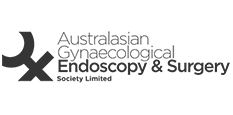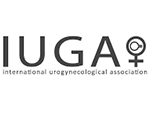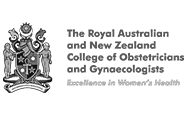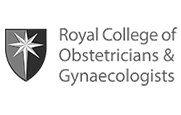Uterine Fibroid (Myoma)
What is a uterine fibroid?
A fibroid (myoma) is the most common benign growth in the uterine wall, consisting of smooth muscle. The chance of having a fibroid increases with age and is estimated to be around 30% for women in their 30’s, increasing by 10% each progressive decade. The vast majority of fibroids do not cause issues however 20% of women will have significant symptoms related to the location, size and number of fibroids present. Fibroids are classified based on their location as:
- Submucosal – located in or partly in the uterine cavity
- Intramural – located in the uterine wall
- Subserosal – bulging outwards from the uterine wall
Common symptoms from fibroids include:
- Heavy, prolonged periods and irregular vaginal bleeding
- Painful periods and non menstrual pelvic pain
- Pressure symptoms related to its mass effect on the bladder and bowel
- Pregnancy related issues including miscarriage, premature labour, abnormal lie, pain during pregnancy related to “red degeneration”
- Mass effect resulting in abdominal bulge
What effects can fibroid have on pregnancy?
Most fibroids that are small in size are unlikely to cause significant problems and thus have no indication for removal. Submucosal fibroids are associated with higher chances of miscarriage, therefore there is clear evidence to support their removal. The impact of intramural fibroids on fertility is less clear thus removal is often only considered if issues with pregnancy arise. Fibroids can grow larger during pregnancy and undergo “red degeneration” where the fibroid outgrows its blood supply and degenerates, sometimes causing pain. Fibroids are also associated with premature labour, abnormal lie of the baby, obstructed labour and a higher chance of postpartum haemorrhage. Again however, it is often unclear when a fibroid should be removed as often women with fibroids have uncomplicated pregnancies.
What are common treatments options for fibroid?
Women with small fibroids that are asymptomatic do not require specific treatment but would benefit from having regular pelvic ultrasounds to monitor their size over time. Sometimes ultrasounds are only performed once symptoms develop, as the symptom burden is often what dictates treatment. Medical treatments for symptomatic relief include the use of nonsteroidal anti-inflammatory drugs (NSAIDs) such as Ponstan and Nurofen for pain, and the oral contraceptive pill, tranexamic acid (Cyklokapron) and intrauterine devices (Mirena) for heavy periods. Iron supplementation is helpful to restore iron levels for those experiencing heavy bleeding.
If symptoms persist and are not responsive to medical treatments, surgical removal of the fibroids can be considered. Surgical treatment is based on the location, size and number of fibroids, and fertility goals.
Surgical Treatments:
- Hysteroscopic resection of fibroid: For submucosal fibroids.
- Laparoscopic myomectomy: For large intramural and subserosal fibroids.
- Laparoscopic hysterectomy: For multiple large fibroids in women with no desire for pregnancy, a hysterectomy could be the best option. It is the only definitive treatment without the risk of recurrence, thus eliminating the need for further surgery or chance of chronic symptoms.
Can my fibroid be removed laparoscopically or robotically?
Fibroid removal can be a challenging procedure and laparoscopic removal of fibroids is recognised as one of the most challenging procedures that requires a very high level of laparoscopic skills. Difficulties with laparoscopic myomectomy include control of bleeding, enucleation of fibroid (shelling out the fibroid from the uterus), suture repairing the uterine defect from where the fibroid was removed, and safe extraction of the fibroid through a small incision. Dr Chou has over the years developed various techniques to overcome these challenges including temporary clamping of uterine artery prior to myomectomy and contained in-bag morcellation for safe extraction of fibroid tissue. The largest fibroid removed laparoscopically by Dr Chou with the aid of a mini-laparotomy was 4.2kg
Robotic surgery is currently the most advanced form of laparoscopic surgery with improved vision, instrumentation and control that is particularly known for its ability to facilitate laparoscopic suturing. Therefore, myomectomy is one of the procedures that can benefit most from application of robotic technology.
Should I have a myomectomy (removal of fibroid) or a hysterectomy (removal of the whole uterus)?
When medical treatments are ineffective and the fibroid is large and not submucosal, the 2 main surgical options are myomectomy and hysterectomy. The key deciding factor is whether there is a plan or wish for future pregnancy. Other important factors include personal preference, cultural values, severity of pathology (number, size and location of the fibroids) and effectiveness of treatment options. Some of the factors to take into account are listed below.
- Myomectomy will preserve the uterus for potential future pregnancy
- Myomectomy may still result in persistence of heavy and painful periods
- Myomectomy may result in recurrence of fibroid with approximately 30% chance of needing further surgery
- Hysterectomy is the definitive treatment with no further period issues
- Hysterectomy does not remove the ovaries therefore hormones will continue to be produced by the preserved ovaries
- Hysterectomy is generally preferable if there is no plan or wish for further pregnancy
Fertility and pregnancy after a myomectomy
Submucosal fibroids are located in or close to the uterine cavity and are shown to affect pregnancy, therefore hysteroscopic resection is recommended in order to improve pregnancy outcome. Intramural and subserosal fibroids are fibroids located within and on the outer aspect of the uterine wall respectively. If removal is indicated, it should ideally be done laparoscopically or robotically. Following their removal, it is recommended to wait 4-6 months for the uterine wall to mend before trying for pregnancy where the uterus is required to expand to accommodate the growing baby. Insufficient healing time may lead to uterine rupture, which is a rare but a very serious condition that typically occurs during labour. The risk of uterine rupture relates to the depth of uterine incision during myomectomy, which is directly related to the depth of the fibroid and if the inner uterine lining was breached during myomectomy. It also depends on the number of fibroids removed. As uterine rupture tends to occur during labour when strong uterine contractions pull open the cervix, patients who are assessed to be of high risk are recommend not to have a natural birth but rather elective caesarean section delivery.















